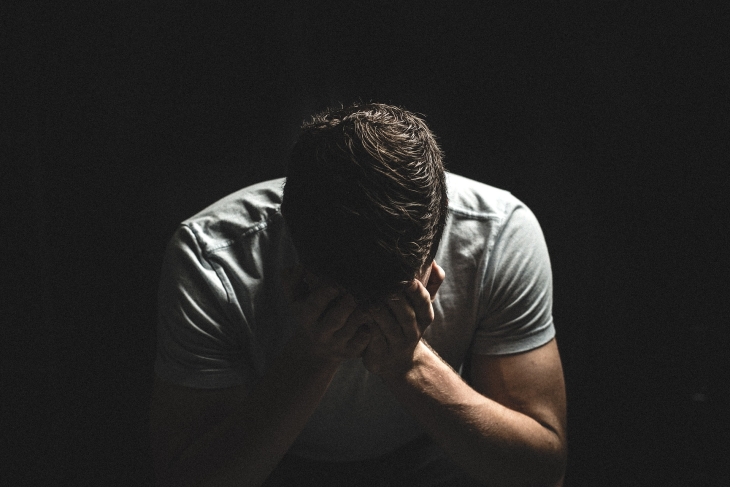
Tramadol use in the U.S. has become much more widespread in recent years, with the number of tramadol prescriptions having increased by 88% from 2008 to 2013. Tramadol is a pain reliever that works similarly to opioids like oxycodone, but that produces side effects and symptoms that differ in type and severity, that are often far more dangerous. Tramadol was initially created as a safer and less addictive alternative to oxycodone, but has serious health consequences when misused or combined with alcohol or any other substance — including prescription drugs.
Between 2005 and 2011, the number of visits to U.S. emergency rooms involving tramadol misuse and abuse increased by 250% — putting tramadol in the spotlight alongside other top drugs of abuse. Tramadol produces the same side effects as all other opioids, along with extra side effects that include seizures, serotonin syndrome, and suicidal tendencies, among many others. Tramadol is also associated with a high risk for dependence and addiction — both of which can eventually lead to an overdose, coma, or death when left untreated.
Here’s an in-depth look at the addictive potential of tramadol, along with 10 risky side effects and symptoms to watch out for if you or a loved one uses this pain reliever.
How Addictive is Tramadol?
Tramadol is a synthetic opioid analgesic prescribed to treat moderate to severe pain. Tramadol was initially approved by the FDA in 1995 and classified as a non-scheduled drug — meaning the drug was not regulated by the DEA and carried fewer restrictions than other opioids. Tramadol was finally listed as a Schedule IV substance in 2014 after numerous reports revealed the drug was associated with high rates of abuse and dependence.
Despite being created as a safer alternative to other opioids, tramadol is just as addictive and carries the same risk for abuse and physical dependence. At the time tramadol was approved by the FDA in 1995, studies had shown the drug carried little risk for addiction when injected. But when used orally in high doses, tramadol was shown to produce euphoric effects similar to that of oxycodone.
Tramadol works just like other opioids in that it binds to opioid receptors in the brain to reduce the sensation of pain. But unlike other drugs in its class, tramadol also increases the brain’s production of serotonin and norepinephrine — neurotransmitters that control one’s mood. As a result, those who become addicted to tramadol experience a broader set of side effects and withdrawal symptoms than those who become addicted to other opioids.
Opioid addiction is now a major epidemic in the U.S. and is driving overdose death rates across the country. Roughly 53,000 people died from opioid overdoses in 2016 — more than 20,000 of which were caused by synthetic opioids like tramadol. Recognizing that you may have a problem with tramadol abuse and addiction can potentially save your life, and prevent you from suffering a deadly overdose.
9 Risky Tramadol Side Effects
In addition to reducing feelings of pain, opioids slow down respiration and breathing to help you relax. But taking too-high doses of opioids like tramadol can slow down breathing to the point you stop breathing completely and suffer an overdose. Taking tramadol as directed is crucial to preventing an overdose and other adverse symptoms that can occur when misusing or abusing this drug.
Here are 9 of the most common side effects of tramadol:
- Seizures
- Serotonin Syndrome
- Swelling
- Insomnia
- Allergic Reaction
- Suicidal Thoughts
- Dependence & Addiction
- Withdrawal
- Overdose
1. Seizures
Seizures are a common side effect of tramadol use, though the risk goes up significantly for those who use this drug in high amounts, or with alcohol, illicit drugs, antipsychotics, and antidepressants. Seizures happen when changes occur in the brain due to electrical disturbances and are thought to be common with tramadol use since the drug increases the brain’s levels of serotonin and norepinephrine. When tramadol is combined with other substances, the risk for seizures is higher due to the way all these different chemicals interact with the brain.
2. Serotonin Syndrome
Serotonin syndrome is a group of symptoms that occur when the brain is exposed to high levels of serotonin, such as that caused by drugs and medications that spike serotonin levels. Studies have shown that using tramadol on its own can cause serotonin syndrome, though the risk increases among those who also use antidepressants, and illicit drugs such as cocaine, MDMA, and LSD. Common symptoms of serotonin syndrome include tremors, confusion, and muscle spasms.
3. Swelling under the Skin
Tramadol use can cause a condition known as angioedema, or swelling under the skin. Though rare, angioedema can happen to anyone who experiences a severe allergic reaction to tramadol. One study found that tramadol can even cause massive swelling of the tongue and protrusion of the tongue through the mouth, along with swollen vocal cords.
4. Insomnia
As one of the most common side effects of tramadol, insomnia poses a number of serious risks that can compromise your overall health and livelihood. Insomnia increases your risk for accidents, impairs your judgement, and doubles your risk for death from heart disease. Lack of sleep also disrupts your natural hormonal balance, and increases the risk for depression, cardiac events, diabetes, and cancer. Research has even found that going without sleep for over 24 hours produces effects similar to that caused by having a blood alcohol concentration level of 0.1%.
5. Allergic Reaction (Anaphylaxis)
Some people who use tramadol may experience a life-threatening allergic reaction to the drug known as anaphylaxis, which can occur as quickly as a few minutes after use. Hives, swelling, rash, difficulty breathing, and shock are common symptoms of anaphylaxis, though symptoms of nausea, vomiting, and fainting may also occur. Seek medical help immediately if you or your loved one suffers an instant allergic reaction after using tramadol.
6. Suicidal Thoughts
People who have a history of suicidal attempts and addiction are at far greater risk for suicide when using tramadol. In 2010 the FDA added a warning to all tramadol products advising doctors and patients about the risk of suicide when using tramadol. This warning was issued after the number of tramadol-related deaths increased in those with histories of drug use disorders and suicidal ideation.
7. Dependence and Addiction

Tramadol tolerance can lead to dependence and addiction.
Along with all other opioids, dependence and addiction are one of the more serious tramadol side effects. Those who use high doses of tramadol can become tolerant to the medication, and require higher doses to achieve the drug’s effects. This can cause the body to become physically dependent on tramadol, which in turn, increases the risk for addiction. A person who becomes dependent on tramadol will experience a set of withdrawal symptoms when reducing their doses, or when attempting to quit the drug cold turkey.
8. Withdrawal
Those who stop using tramadol abruptly or who lower their usual dosage amount will experience a set of tramadol withdrawal symptoms within 12 hours of the last dose. The DEA reports that 90% of tramadol users will experience traditional opioid withdrawal symptoms, while the remaining 10% may also experience symptoms associated with reduced levels of serotonin and norepinephrine.
Common opioid withdrawal symptoms include:
- A runny nose
- Tearing eyes
- Sweating
- Muscle and body aches
- Abdominal pain and cramping
- Diarrhea
- Nausea and vomiting
- Insomnia
- Hypertension
- Rapid heart rate
- Agitation
- Irritability
- Problems with memory and concentration
- Anxiety
- Depression
- Drug cravings
Additional withdrawal symptoms associated strictly with tramadol use include:
- Tingling and numbness in limbs
- Confusion
- Panic attacks
- Extreme paranoia
- Hallucinations
9. Overdose
Using too much tramadol or using the drug in ways other than directed can cause a fatal overdose. Those who use tramadol with other substances are also at high risk for an overdose. Opioid overdoses can often be reversed with an opioid overdose reversal drug called naloxone, but sometimes, naloxone can fail to revive tramadol overdose victims due to the way this drug differs in chemical makeup from all other opioids.
A tramadol overdose can lead to a coma or death. Contact emergency services immediately if you or someone you love exhibits the following symptoms after using tramadol:
- Slowed or stopped breathing
- Irregular heart rate
- Constricted pupils
- Rigid muscles
- Muscle pain
- Vomiting
- Pale, clammy skin
- Hyperthermia
- Bluish tint to nails and lips
- Seizure
- Loss of consciousness
The above 9 tramadol side effects and symptoms may be some of the most risky for users; however, other side effects may still occur. Cognitive decline, digestive problems, fever, and overactive reflexes are other serious tramadol effects that can result from continued tramadol use.
If you or a loved one is suffering from tramadol dependence, don’t hesitate to seek help right away, since continued tramadol use can lead to serious health problems, including death.
How Can I Get Treatment for Tramadol Addiction?
It’s never too late to get clean from tramadol, regardless of how long you’ve been using this narcotic. Tramadol addiction is dangerous, and can severely compromise your health. The safest way to overcome tramadol addiction is to get help at an inpatient treatment center that offers detox, therapy, and aftercare.
An inpatient setting provides patients with the safest possible environment in which to experience hallucinations, panic attacks, and other adverse symptoms that could otherwise put themselves and their loved ones in danger. Addiction treatment experts recommend that tramadol patients participate in 90-day programs to experience the best recovery outcome.
Tramadol Detox
Withdrawing from tramadol is highly risky and dangerous when conducted at home or on your own without professional help and treatment. Tramadol detox is the first stage of addiction treatment and helps you safely overcome tramadol dependence with a lowered risk for related complications. Since tramadol withdrawal symptoms are both physical and psychological in nature, going through detox at an inpatient center can keep you or your loved one safe from suicide, cardiac events, and other life-threatening side effects.
Tramadol detox is commonly conducted as a medical detox, or on a tapering schedule. A medical detox allows you to withdraw from tramadol while being monitored by medical staff who prevent potential complications. Many times, a medical detox from tramadol involves the use of medications including methadone, buprenorphine, or naltrexone — all of which can relieve and eliminate traditional opioid withdrawal symptoms.
A tapering schedule allows you to slowly withdraw from tramadol until you’re no longer dependent on the drug. With tapering, doctors work closely with you to develop a tapering schedule that reduces your doses gradually over time, and that minimizes withdrawal symptoms and adverse side effects as much as possible. Both detox procedures are highly effective and produce positive recovery outcomes when conducted in an inpatient environment.
Therapy
Individual therapy, group therapy, support groups, and cognitive-behavioral therapy are just some therapies used to treat tramadol addiction. Therapy helps you overcome the root causes of your tramadol addiction so you can stay sober indefinitely after finishing treatment at an inpatient rehab center. Therapy also helps you learn how to manage and overcome triggers, as well as depression, anxiety, and other psychological side effects of tramadol addiction.
Finding Affordable Treatment
Americans who suffer from addiction commonly cite lack of financial resources as their reason for avoiding treatment. But today, addiction treatment can be made entirely affordable for you regardless of your income level or financial situation.
Many health insurers cover some or all costs of addiction treatment, including Medicare, Medicaid, and all health plans purchased at HealthCare.gov. Sliding scale fees are also available to adjust treatment costs based on your income, as well as grants and scholarships that cover some or all treatment costs.
